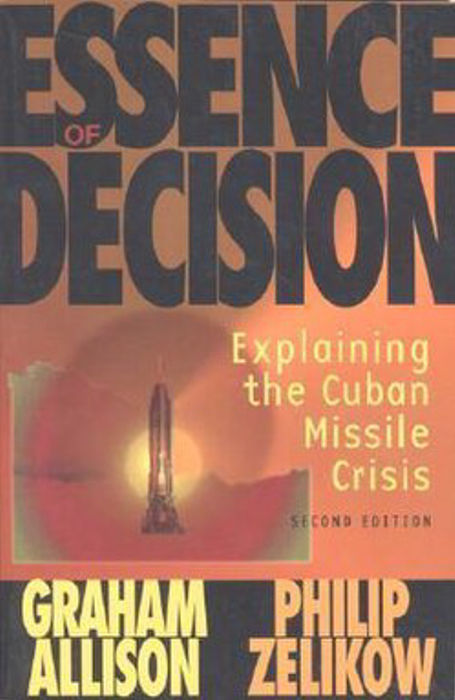Books
Graham T. Allison, Philip Zelikow
Essence of Decision
Explaining the Cuban Missile Crisis
The Cuban Missile Crisis of 1962 wasn’t just a Cold War showdown—it was a masterclass in decision-making under existential pressure. Few works capture its complexity as incisively as Essence of Decision by Graham T. Allison and Philip Zelikow, a seminal book that reshaped how we analyze international crises and governmental choices.
Essence of Decision is a landmark work in political science and international relations that dissects the Cuban Missile Crisis through three distinct analytical models: the Rational Actor Model, the Organizational Behavior Model, and the Governmental Politics Model. By applying these frameworks, the authors reveal how government decisions are shaped not only by strategic calculation but also by bureaucratic routines and internal political struggles. This multifaceted approach provides a deeper understanding of how the United States and the Soviet Union navigated one of the most perilous moments of the Cold War, ultimately averting nuclear catastrophe.
What sets Essence of Decision apart is its rigorous use of primary sources, including transcripts and government documents, which offer readers an unprecedented inside look at the decision-making processes of key leaders during the crisis. The authors challenge the conventional narrative of rational, unified state action by demonstrating the fragmented and often chaotic nature of policymaking. For example, the decision to impose a naval blockade on Cuba was not the product of a single strategic vision but rather a compromise shaped by differing perspectives within the Executive Committee advising President Kennedy.
Widely regarded as a classic in political science and international relations, Essence of Decision has fundamentally changed how scholars and practitioners study crisis management and foreign policy. Its emphasis on multiple theoretical perspectives remains essential for understanding the complexities of governmental decisions under pressure. The book continues to offer timeless lessons for policymakers, diplomats, and students alike, reminding us that the realities of power and decision-making are shaped as much by human factors and institutional dynamics as by cold, calculated logic.

